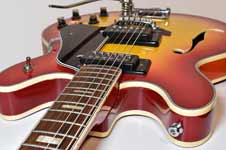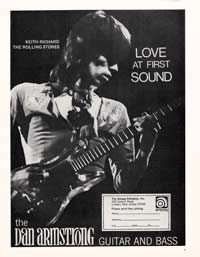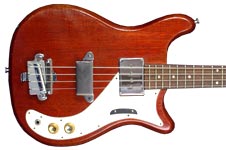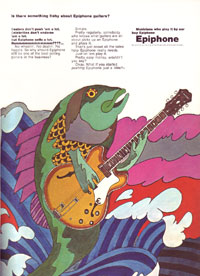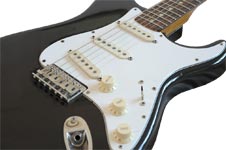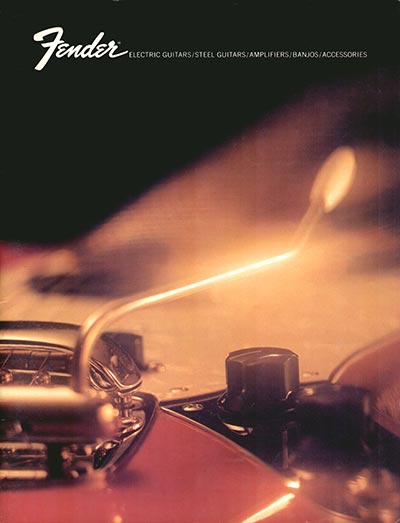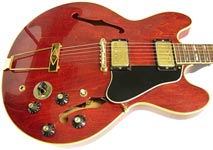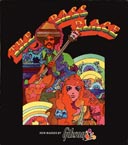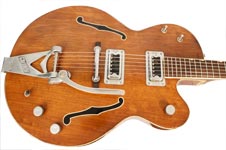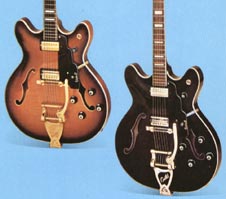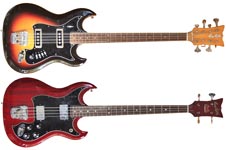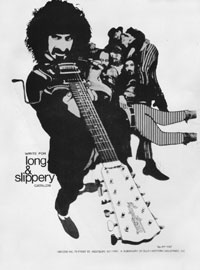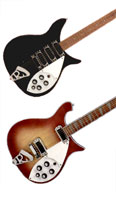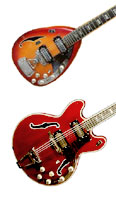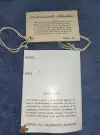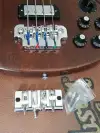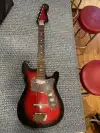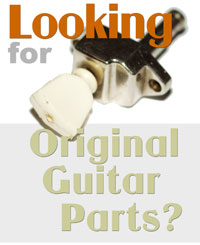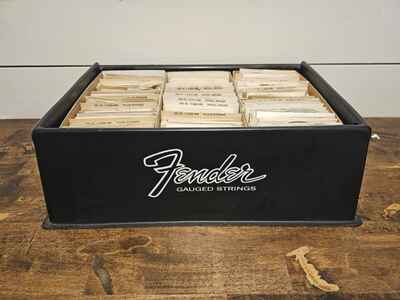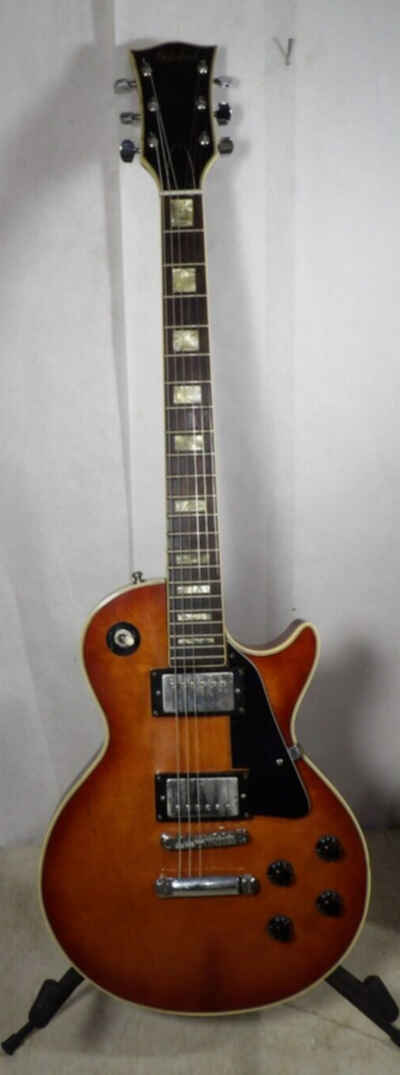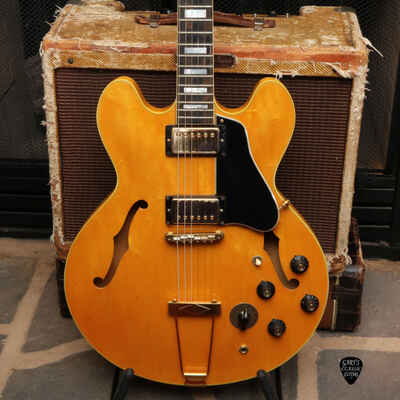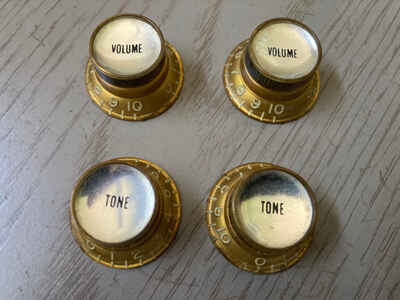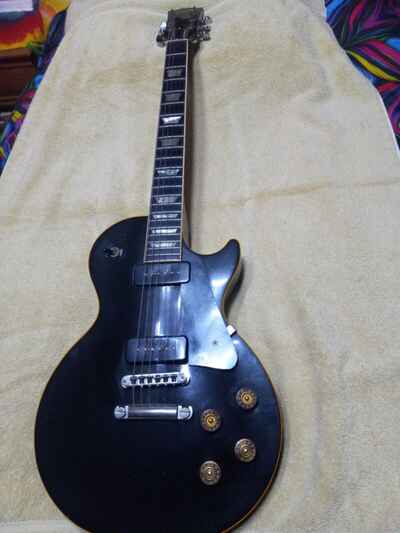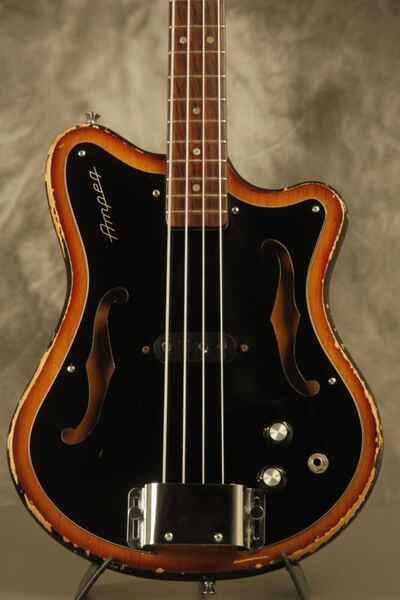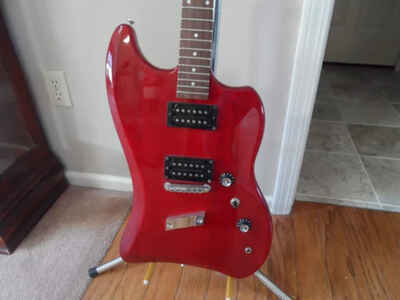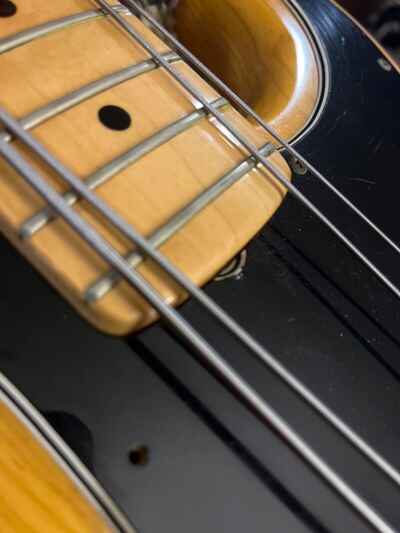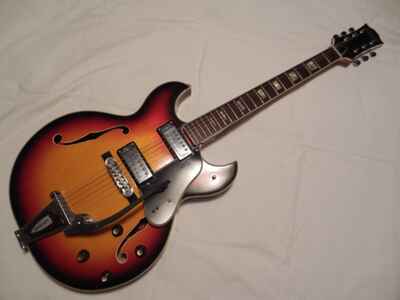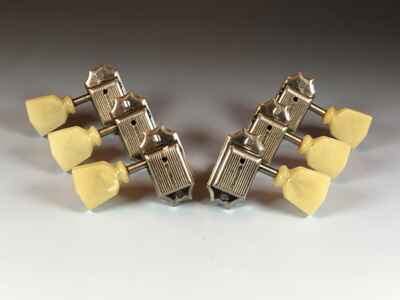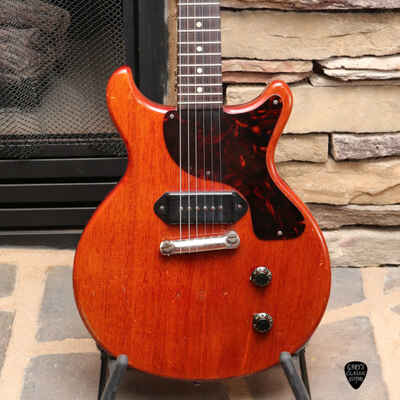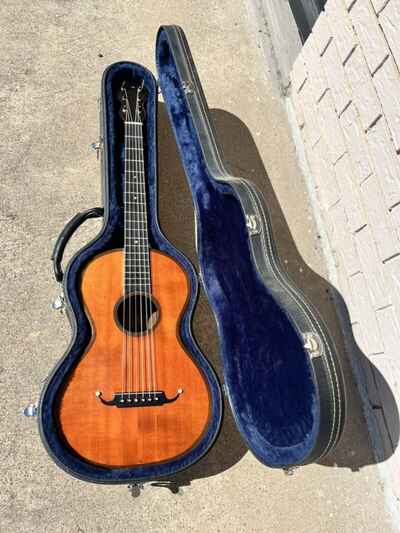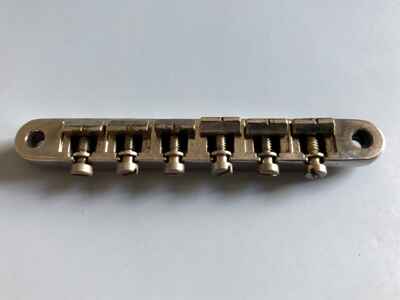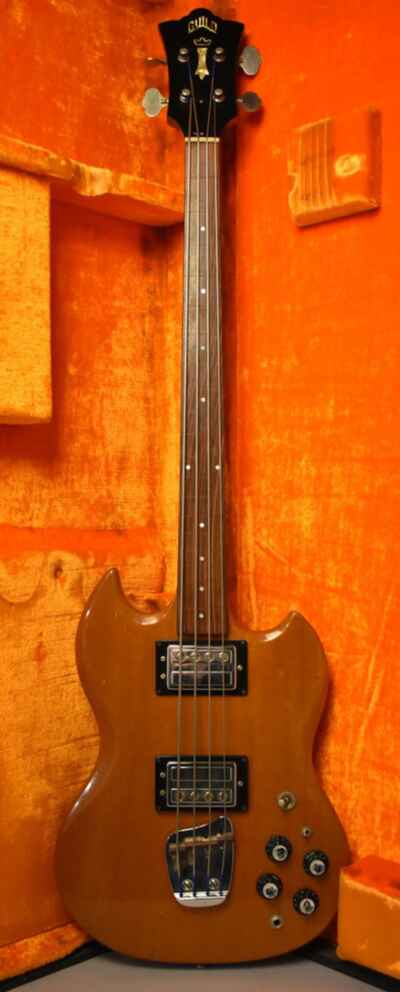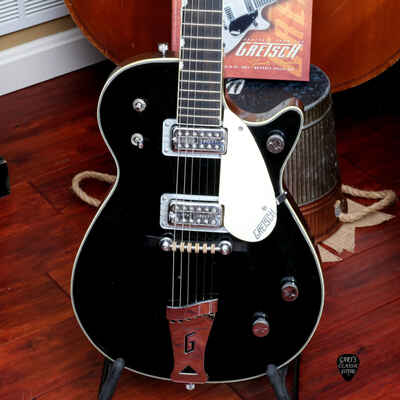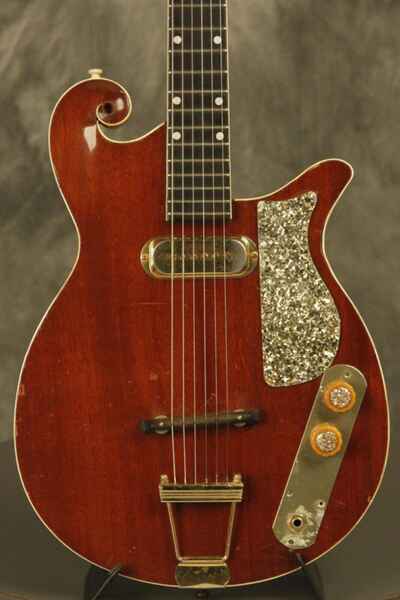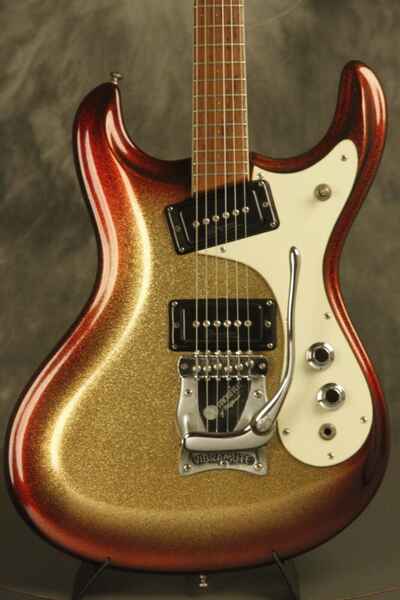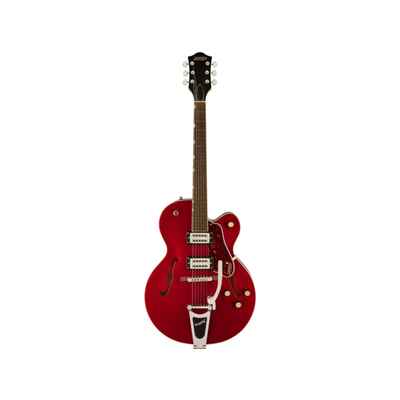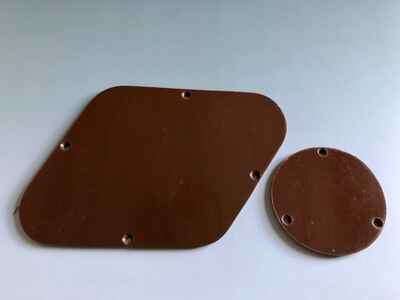This site is a resource for vintage guitar information; primarily electric guitars by American, European and Japanese manufacturers from the 1950s into the early 1980s. The term vintage can mean different things to different people, but for the purposes of this site, vintage guitars are those produced up until the early/mid 1980s; ending approximately with Norlin's last Gibsons, CBS's last Fenders and the demise of Hagstrom, Guild and Gretsch. These brands have all now been revived, and many offer good replicas of their classic models, but there is nothing quite like the real thing!
Content is sorted by manufacturer / distributor, and the majority of information relates to the following brands: (in alphabetical order)
Commodore
Commodore was a guitar brand sold in the United Kingdom from the late 1960s and through the 1970s. Instruments were typically made by Japanese builder Matsumoku, and identical (to a greater or lesser extent) models were sold worldwide under a wide range of other names, such as Aria, Conrad, Epiphone, Univox and many many more.
Although student models, Commodore guitars were not at all badly-made, and are pretty solidly built. With a bit of TLC and a good set-up these can make nice playing guitars.
Dan Armstrong
The name Dan Armstrong is probably most associated with the plexiglass (lucite) guitars produced from 1968 in conjunction with Ampeg. They came up with a guitar and bass versions, built in the USA. Dan Armstrong relocated to London, producing a number of suitably named new models in the UK; this time of Honduran mahogany.
High profile early users such as Keith Richards of the Rolling Stones and Jack Bruce (formerly) of Cream gave these guitars instant cult appeal.

Epiphone
Epiphone were one of the big American brands of the first half of the twentieth century. Along with the likes of Gibson and Gretsch, they epitomised quality, producing some of the very best electric acoustic guitars of the period. But the best known vintage Epiphone guitars are those produced from Gibson's Kalamazoo plant after 1957; most notably the semi-acoustic models based on Gibson's ES series, the Epiphone Casino, Sheraton, and Rivoli bass.
From 1970, Epiphone production moved to Japan, with an entire range of entry and intermediate level guitars based on the earlier American-built models. Many shared the same names and overall look, but were typically constructed to a lower price point to compete with other imported instruments.

For more about Epiphone instruments in general, see the Epiphone Index
Fender
Fender are perhaps the best-known electric guitar company in the world, producing a handful of models that are household names to even those completely un-versed in guitars: the Fender Stratocaster or Fender Telecaster. Although incredibly successful, Fender had a completely different ethos to the old-guard; after all they evolved from an electronics background, not from the manufacture of jazz and orchestral instruments like Gibson, Gretsch and Epiphone. They stuck to what they did best: simple solid body guitars, with excellent electronics, easily assembled by a largely unskilled workforce. It just happened that this novel approach coincided with the birth of youth culture in the USA, and the two went hand in hand. Vintage Fender guitars are hugely collectable and command very high prices.

For more about Fender instruments see the Fender Index
Futurama
Futurama was a brand created by Selmer in the UK, and consisted of rebranded guitars produced by Resonet, CSHN and Hagstrom. These guitars were available in the UK from the late 1950s and through the 1960s.
For more about Futurama instruments see the Futurama Index
G & L
G&L started at the tail end of the 1970s, in many ways as a continuation of the guitars of Fender and Musicman. G & L were the initials of George Fullerton and Leo Fender - who was behind the forementioned brands - these guitars were produced at the old Fender plant in Fullerton, California.
Gibson
Gibson guitars, especially vintage Gibson guitars, are always associated with quality. Well-made instruments, high-end woods, high quality finishes and only the best components. Unlike Fender above, Gibson's focus was on the art of instrument manufacture; they had been building mandolins, banjos and acoustic guitars long before the advent of electric guitars. The Gibson workforce included a lot of talented luthiers, and vintage Gibson guitars, especially those built in the 1950s and 1960s are considered some of the most desirable of all guitars, for both players and collectors. Antique Gibson guitars and mandolins are very cool instruments, but not as revered as a late 1950s Les Paul.
Unfortunately, many vintage Gibson guitars for sale are beyond the reach of typical players, and even if they are lucky enough to own them, too valuable to 'gig'.
The reputation of 1970s Gibsons (Norlin period) is not so good. In reality, this relates to the mass production of entry level models, competing with imports on price. It is certainly no reflection on the more expensive models built without the price constraints of the entry level guitars.
There is considerable Gibson content on this site, sorted into the following sections.
For more about Gibson instruments see the Gibson Index
Goya
The story of Goya, and the guitars carrying that name is not simple; instruments made in the 1950s and 1960s have good reputations, and these were typically built by Levin of Gothenburg, Sweden (flattops, acoustics) or accordion manufacturer, Hagstrom, also of Sweden (Goya 80 and Goya 90 electrics, 1960/61). In the mid-late 1960s, a number of guitars were also produced in Italy, by another accordion maker Polvini (such as the Rangemaster semi-acoustic) and Galanti (such as the Rangemaster solid body). Later still, production would move to Korea.
Gretsch
Gretsch started producing guitars in the 1930s, mostly acoustic and semi-acoustic electrics. The 1950s and 1960s saw the manufacture of a lot of fine guitars, most of which command high prices today; especially the ornate semi-acoustics. Vintage Gretsch guitars such as the Chet Atkins Country Gentleman, White Falcon and Duo Jet solid body are particularly sought after by Gretsch collectors.
The 'Baldwin' period of the 1970s was traditionally less interesting to many Gretsch aficionados, but it did see the introduction of several interesting new models, mostly short-lived, and now growing in popularity.
For more about Gretsch instruments see the Gretsch Index
Guild
Guild were another of the really highly respected American guitar companies of the 1950s and 1960s, although they only started producing guitars in 1953. They almost immediately had a highly-skilled workforce, taking on ex-Epiphone employees after Epiphone relocated it's production from New York to Philadelphia.
They produced a wide range of full-body electric acoustics, thinlines (including the well-known Starfire range) and solid bodies. Some are quite original in design, others quite traditional Epiphone and Gibson-styled guitars.
Vintage Guild guitars are of excellent quality, and are often very much more affordable than equivalent models by Gretsch or Gibson. Today, many classic Guild guitars are available as reissues.
For more about Guild instruments see the Guild Index
Hagstrom
Hagstrom were a Swedish accordion maker when they first started the manufacture of guitars; but with the beat boom of the middle 1960s, guitars became the mainstay of the company. Some models were re-branded for sale worldwide, including Futurama in the UK, and Kent in the US.
Hagstrom also made high quality components: bridges and pickups were used by numerous other guitar manufacturers including Guild and Harmony.
Vintage Hagstrom guitars were highly playable with easy low-action necks. Some earlier models lacked tone potentiometers which is perhaps their biggest drawback, but seventies guitars such as the Hagstrom Swede, are absolutely outstanding in every way!
For more about Hagstrom instruments see the Hagstrom Index
Harmony
Harmony, of Chicago, were another of America's long-standing guitar companies with a history of acoustic and electric instrument manufacture. It is estimated that they were in fact the largest by far; space-age named models like the Stratotone, Meteor and Rocket captured the countries imagination, and at one point in the 1960s, Harmony were producing more guitars than all other US companies combined. Most were entry, to intermediate level, ideally suited for the thousands of budding guitarists appearing across the US.
For more about Harmony instruments see the Harmony Index
Hayman
Hofner
Germany company Hofner were one of Europe's best known brands, at a time when exported US guitars were very expensive indeed. Like Epiphone, Gibson and Harmony, they had a long tradition of luthiery, especially in stringed orchestral instruments such as violins, which lead to a certain style of guitar manufacture, including a lot of well-made acoustic and electric acoustic guitars. The guitar range included several high-end professional models, and with endorsements of big stars like Paul McCartney, and of little home-grown competition they managed to capture much of the early 1960s UK market.
For more about Hofner instruments see the Hofner Index
Ibanez
Kalamazoo
Kalamazoo was a brand of guitars produced by Gibson in the 1930s, 40s and 60s, named in honour of the hometown in which they were based.
For more about Kalamazoo instruments see the Kalamazoo Index
Musicman
Ovation
Ovation are one of the newer companies on this list, only starting production in Connecticut, USA in 1967.
For more about Ovation instruments see the Ovation Index
Peavey
Peavey was formed in Mississippi, USA in 1965. It is far better known as an amplifier manufacturer, but did also produce a number of well-regarded guitars and basses in the late 1970s/early 1980s.
Rickenbacker
Selmer
Long-standing British musical instrument retailer, particularly noted for it's early 1960s valve amplifiers. Also responsible for the distribution of Fender, Gibson, Hofner and Futurama guitars in the United Kingdom and Commonwealth.
Futurama was the companies own brand; guitars imported from Europe, a number of solid bodies produced by Hagstrom. A number of guitars branded Selmer were also offered, these built by Hofner.

For more about Selmer instruments see the Selmer Index
Vox
Vox were responsible for some utterly iconic guitars; the Phantom, and teardrop-shaped Mark series pretty much scream 1960s. But Vox's mid sixties guitar range was quite extensive, and others were a lot more generic, often Fender-styled guitars.
Vox, like Fender above, were primarily an electronics (amplifier) company when they started producing guitars. Consequently a lot of the early Vox guitars were relatively straightforward in construction; but perhaps fitted with complicated effects electronic circuity, such as fuzz, tremolo and tone boost. Vox were associated with the Beatles, the Stones and many more; demand peaked right in the midst of the guitar boom of the mid 1960s and Vox had to outsource production to Eko and Crucianelli of Italy to keep up.

For more about Vox instruments see the Vox Index
Yamaha


